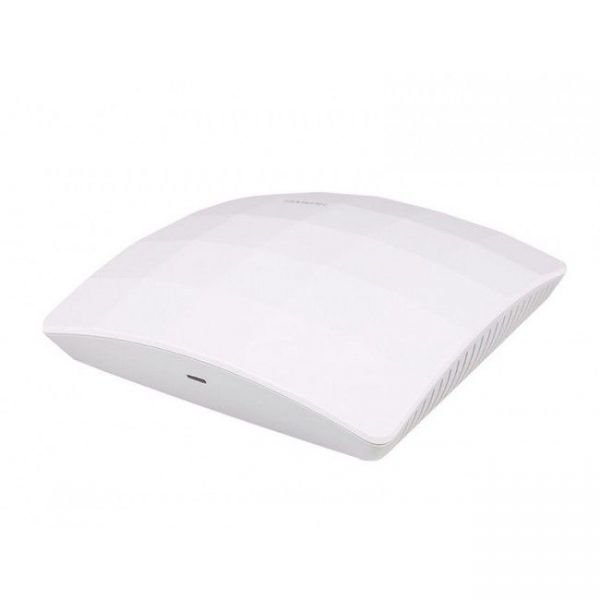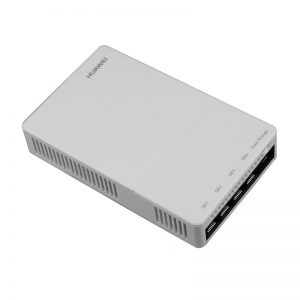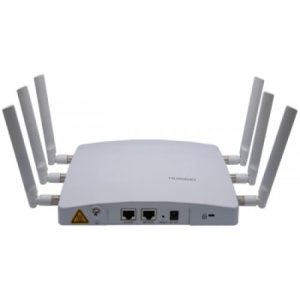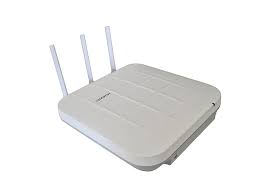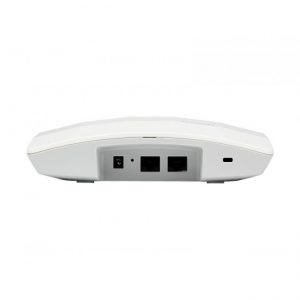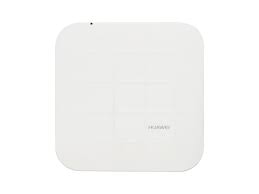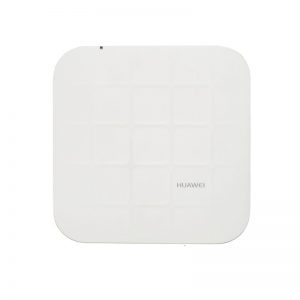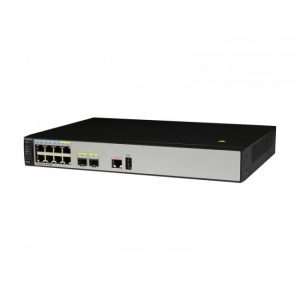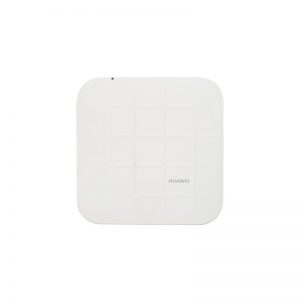Product Details
AP5010SN-GN-DC
$337.00
< tbody >
| Model: | AP5010SN-GN-DC 02358263 Huawei AP5010SN Indoor Access Point |
| Detail: | AP5010SN-GN Bundle(11n,General AP Indoor,2×2 Single Frequency,Built-in Antenna,AC/DC adapter) |
Description
AP5010SN-GN-DC Specifications |
|||||||
|
Technical |
|||||||
| Dimensions (H × W × D) | 1.9 in. x 7 in. x 7 in. (50 mm x 180 mm x 180 mm) | ||||||
| Weight | 0.8 lb. (0.4 kg) | ||||||
| System memory | 128 MB DDR2
32 MB flash memory |
||||||
|
Power |
|||||||
| Power Adapter | AC/DC adapter | ||||||
| Power input | DC 12V ± 10%
POE Power: -48V DC. PoE function complies with IEEE 802.3af and 802.3at |
||||||
| Maximum power consumption | 6.0W
Note: Maximum power consumption depends on local laws and regulations |
||||||
|
Environment |
|||||||
| Operating temperature | 14oF to 122oF (-10oC to 50oC) | ||||||
| Storage temperature | -40oF to 158oF (-40oC to 70oC) | ||||||
| Humidity | 5% to 95% (Non-condensing) | ||||||
| Waterproof grade | IP31 | ||||||
| Altitude | -196 ft. to 16,404.1 ft. (-60m to 5,000m) | ||||||
|
Radio |
|||||||
| Antenna Type | Built-in | ||||||
| Antenna Gain | 4 dBi | ||||||
| Maximum Number of Concurrent Users | 128 | ||||||
| Maximum Transmit Power | 17 dBm
You can adjust the transmit power to the maximum of 20 dB in 1 dB steps Note: Actual transmit power depends on local laws and regulations |
||||||
| Maximum Number of Non-overlapping Channels | 802.11b/g
·20 MHz: 3 802.11n ·20 MHz: 3 ·40 MHz: 1 Note: The number of non-overlapping channels allowed varies in different countries. For details, see the Country Codes and Channels compliance status |
||||||
| Channel Rates | 802.11b: 1, 2, 5.5, and 11 Mbit/s | ||||||
| 802.11g: 6, 9, 12, 18, 24, 36, 48, and 54 Mbit/s | |||||||
| 802.11n data rate:2.4 GHz | |||||||
| GI2 = 800 ns | GI = 400 ns | ||||||
| 20 MHz (Mbit/s) | 40 MHz (Mbit/s) | 20 MHz (Mbit/s) | 40 MHz (Mbit/s) | ||||
| 6.5 @ MCS10 | 13.5 @ MCS0 | 7.2 @ MCS0 | 15 @ MCS0 | ||||
| 13 @ MCS1 | 27 @ MCS1 | 14.4 @ MCS1 | 30 @ MCS1 | ||||
| 19.5 @ MCS2 | 40.5 @ MCS2 | 21.7 @ MCS2 | 45 @ MCS2 | ||||
| 26 @ MCS3 | 54 @ MCS3 | 28.9 @ MCS3 | 60 @ MCS3 | ||||
| 39 @ MCS4 | 81 @ MCS4 | 43.3 @ MCS4 | 90 @ MCS4 | ||||
| 52 @ MCS5 | 108 @ MCS5 | 57.8 @ MCS5 | 120 @ MCS5 | ||||
| 58.5 @ MCS6 | 121.5 @ MCS6 | 65 @ MCS6 | 135 @ MCS6 | ||||
| 65 @ MCS7 | 135 @ MCS7 | 72.2 @ MCS7 | 150 @ MCS7 | ||||
| 13 @ MCS8 | 27 @ MCS8 | 14.4 @ MCS8 | 30 @ MCS8 | ||||
| 26 @ MCS9 | 54 @ MCS9 | 28.9 @ MCS9 | 60 @ MCS9 | ||||
| 39 @ MCS10 | 81 @ MCS10 | 43.3 @ MCS10 | 90 @ MCS10 | ||||
| 52 @ MCS11 | 108 @ MCS11 | 57.8 @ MCS11 | 120 @ MCS11 | ||||
| 78 @ MCS12 | 162 @ MCS12 | 86.7 @ MCS12 | 180 @ MCS12 | ||||
| 104 @ MCS13 | 216 @ MCS13 | 115.6 @ MCS13 | 240 @ MCS13 | ||||
| 117 @ MCS14 | 243 @ MCS14 | 130 @ MCS14 | 270 @ MCS14 | ||||
| 130 @ MCS15 | 270 @ MCS15 | 144.4 @ MCS15 | 300 @ MCS15 | ||||
| Note: Modulation Coding Scheme (MCS) index determines:
Spatial flow quantity Modulation Coding rate Data rate Guard Interval (GI) indicates the period in nanoseconds the radio listens for between packets |
|||||||
| Receiver Sensitivity | 802.11b (CCK)
·-96 dBm @ 1 Mbit/s ·-91 dBm @ 2 Mbit/s ·-92 dBm @ 5.5 Mbit/s ·-88 dBm @ 11 Mbit/s |
802.11g (Non-HT20)
·-91 dBm @ 6 Mbit/s ·-90 dBm @ 9 Mbit/s ·-89 dBm @ 12 Mbit/s ·-86 dBm @ 18 Mbit/s ·-83 dBm @ 24 Mbit/s ·-80 dBm @ 36 Mbit/s ·-76 dBm @ 48 Mbit/s ·-74 dBm @ 54 Mbit/s |
802.11n (HT20)
·-91 dBm @ MCS0 ·-88 dBm @ MCS1 ·-86 dBm @ MCS2 ·-81 dBm @ MCS3 ·-78 dBm @ MCS4 ·-74 dBm @ MCS5 ·-72 dBm @ MCS6 ·-71 dBm @ MCS7 ·-89 dBm @ MCS8 ·-88 dBm @ MCS9 ·-86 dBm @ MCS10 ·-82 dBm @ MCS11 ·-79 dBm @ MCS12 ·-74 dBm @ MCS13 ·-73 dBm @ MCS14 ·-71 dBm @ MCS15 |
802.11n (HT40)
·-88 dBm @ MCS0 ·-85 dBm @ MCS1 ·-83 dBm @ MCS2 ·-78 dBm @ MCS3 ·-75 dBm @ MCS4 ·-71 dBm @ MCS5 ·-70 dBm @ MCS6 ·-68 dBm @ MCS7 ·-88 dBm @ MCS8 ·-85 dBm @ MCS9 ·-82 dBm @ MCS10 ·-79 dBm @ MCS11 ·-76 dBm @ MCS12 ·-71 dBm @ MCS13 ·-70 dBm @ MCS14 ·-68 dBm @ MCS15 |
|||





